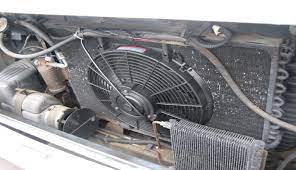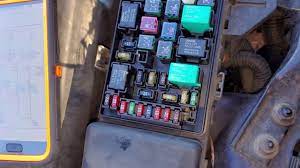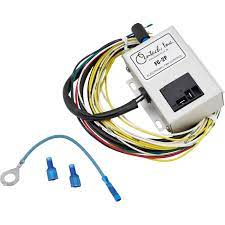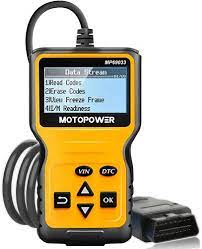Reasons a Car Radiator Fan is not Working & How to Fix It
Protecting the engine from the heat is the job of the car's cooling system which includes various parts and a system of liquid coolant. Also part of this system is the radiator in which you will find the radiator fan, the subject of this article.
We are going to look more closely at the radiator fan to understand its role in the car. Additionally we will look at some of the symptoms of a broken radiator fan and how you might be able to fix the issue.
What Does a Car Radiator Fan Do?
To fully understand the role of the car radiator fan you must first understand what the radiator itself does. The engine of your car is surrounded by a coolant system through which a fluid flows that absorbs the heat of the engine taking it away.
This super heated coolant circulates through the system finally reaching the radiator where it is able to release this heat before starting another cycle through the system. The heat escapes the radiator by dissipating through the metal ridges.

To aid the release of this heat from the radiator a fan is used to pull cool air over the radiator's elements. The radiator fan in a modern car is usually most active while at idle or traveling at low speed. This is because there is less natural air flow over the radiators under those conditions. If we are traveling at high speed air floods in through the grille and helps cool the radiator.
In older cars the radiator fan was powered by the engine which meant that it slowed down when the car did which was not very efficient. Today it is an electronically powered component so it will work when it is needed no matter the speed you are traveling.
Can You Drive With a Broken Radiator Fan?
Technically the car will function without the radiator fan working but you will have a greatly depleted cooling system. The main problem with this is that if the engine is not being cooled it can overheat very quickly which is damaging to the engine.
If you need to get the car to a mechanic to fix the radiator fan then you can probably do this as long as the distance is not far and that you keep an eye on your engine temperature gauge. If it starts to get too hot you will want to stop and let it cool down. Prolonged high temperatures in the engine can cause serious damage.
What Can Cause a Radiator Fan to Not Work?
The humble radiator fan is so important to the cooling of the engine so when it fails this can be a big problem. There are many reasons that it could potentially stop functioning, some of which may be fixed easily while others are more complicated. Whatever the cause, repairs should be made quickly as overheating engines are not good for your car.
Blown Fuse
As mentioned in modern cars the radiator fan is electrically powered so as such it is dependent on fuses and wires. If you know anything about how fuses work sometimes they will blow especially if they are protecting the electronics from power surges.
Sadly unlike the fuses you have in your house you can’t just flip a switch and have them back working as car fuses literally burn out or break when protecting against power surges. This means that power will no longer make it to the component they are protecting in this case the radiator fan.

If the issue is a blown fuse then you are lucky as this can be an easy fix. In fact sometimes you might even find a spare fuse in the car's fuse box itself as many manufacturers will have extra fuses for this eventuality.
Check your owner's manual to find out which fuse connects to your radiator fan and just take a look at it. If it shows signs of being burned out or broken then you should be able to simply replace the fuse and things will get back to normal.
Broken or Loose Wiring
The fuses serve as the protection against electrical surges but the wires carry the electrical current to parts like the radiator fan. Over time wiring can become worn out or damaged creating breaks in the system or loose connections.
A quick inspection of the wiring going from the radiator ro the controller or relay may show you if there is an issue. If wires appear worn, burned or the connections are loose then this is likely the issue and you may need to tighten, repair or replace to get things working again.
Bad Fan Controller Module
The fan needs to know when to turn on which as mentioned usually happens at low speeds or while idling. Depending on your car it may have a separate control module specifically designed to control the fan. As it is in the engine compartment this module is open to heat and dust which over time can do damage or cause corrosion.

If you can locate this part you can do a visual inspection for signs of damage. If it appears damaged you will likely need to replace this control unit in order to get the fan spinning again.
Faulty Fan Relay
It takes a lot of current to run this fan so as a result not only does it have a fuse but also its own relay. This relay like all things electrical can become damaged and if this happens it will stop the flow of electricity to the fan.
You should find this relay in the engine compartment fuse box although you will want to check your owner's manual to locate the right one. If you have the skill and equipment to test the relay then you can do this to help diagnose the issue.
Faulty Coolant Temperature Sensor
There are two main fan control systems, they are either integrated into the motor control unit or they are a separate fan control module. Regardless of which system your car has, both use coolant temperature sensors to know when to turn the fan on.
If the engine temperature gets high then the sensors will let the radiator fan know that it needs to start up. If the coolant temperature sensor is not working however then it will not send the signal to start. As a result the fan will not spin and there will be no additional cooling effect.
Low Coolant
The coolant temperature sensor may be working perfectly but if there is not enough liquid coolant in the system then it may be getting inaccurate readings. This is because the space that should be filled with coolant may now be taken up by air.

Check your coolant levels and if it is low, top it up. This may be enough to get the correct readings flowing; the fan may well start back up.
Broken Radiator Fan
Finally there is always the possibility that the fan or its motor are actually broken. The motor especially can wear out over time and need to be replaced. You may also find that the fan has become loose, clogged or damaged.
How Do You Fix a Radiator Fan?
Check the Trouble Codes
If you are the type of person who likes to work on their own cars then a great tool for you would be an OBD2 scanner. This handheld device can connect to your car from the OBD connector which is generally located below your steering wheel.

With a scanner tool you can check your car's computer memory for trouble codes. If you compare these codes to a list for your specific model you can find out where your cars' existing problems are. This will help you pinpoint potential repair jobs.
Check Your Fuses
A great place to start if you do not have access to a scanner tool is to locate the fuse that corresponds to your radiator fan. You can visually inspect this for signs of having blown and if need be you can pull the old fuse and replace it with a new one.
The radiator fan fuse is usually 30 - 50 amps and sometimes you may find a spare fuse in one of the redundant spots of your fuse box. If not you can buy this type of fuse inexpensively. Before you put a new fuse in however you may want to inspect the wiring associated with the fan.
Any signs of damage or loose connections in the wiring should be fixed before using a new fuse. This is because the old fuse blew for a reason and this new one may do the same if the issue is not dealt with first.
Check Coolant Levels
An accurate coolant temperature reading is important to make sure the radiator fan turns on when needed. This means you should make sure that the coolant level is adequate if your fan decides to stop working. The problem could be as simple as the coolant temperature sensors not communicating the need to start to the fan.
It is very easy to check coolant levels as the holding tank usually has max and min fill lines that allow you to see if there is enough coolant in the system. If you do not have enough you will want to add some to the reservoir. This may fix the issue but you should monitor the levels for a while to ensure you do not have a coolant leak.
Talk to a Professional
As the radiator fan in modern vehicles is very much an electrically run part these days you may want to leave any work on it to the professionals. The last thing you need to do is make a mistake with the electronics of your car that might lead to other issues.
Working on your own car is admirable but sometimes we need to know our limitations and when to ask for professional advice or assistance.
Conclusion
The radiator fan is very vital to the engine cooling process so when it does not function correctly we have no choice but to fix this issue. Without a working fan we will quickly start to get an overheating engine which can lead to even more damage.
Link To or Reference This Page
We spend a lot of time collecting, cleaning, merging, and formatting the data that is shown on the site to be as useful to you as possible.
If you found the data or information on this page useful in your research, please use the tool below to properly cite or reference Tow Ratings as the source. We appreciate your support!
-
<a href="http://towratings.net/blog/reasons-a-car-radiator-fan-is-not-working-how-to-fix-it/">Reasons a Car Radiator Fan is not Working & How to Fix It</a>
-
"Reasons a Car Radiator Fan is not Working & How to Fix It". Tow Ratings. Accessed on April 26, 2024. http://towratings.net/blog/reasons-a-car-radiator-fan-is-not-working-how-to-fix-it/.
-
"Reasons a Car Radiator Fan is not Working & How to Fix It". Tow Ratings, http://towratings.net/blog/reasons-a-car-radiator-fan-is-not-working-how-to-fix-it/. Accessed 26 April, 2024
-
Reasons a Car Radiator Fan is not Working & How to Fix It. Tow Ratings. Retrieved from http://towratings.net/blog/reasons-a-car-radiator-fan-is-not-working-how-to-fix-it/.